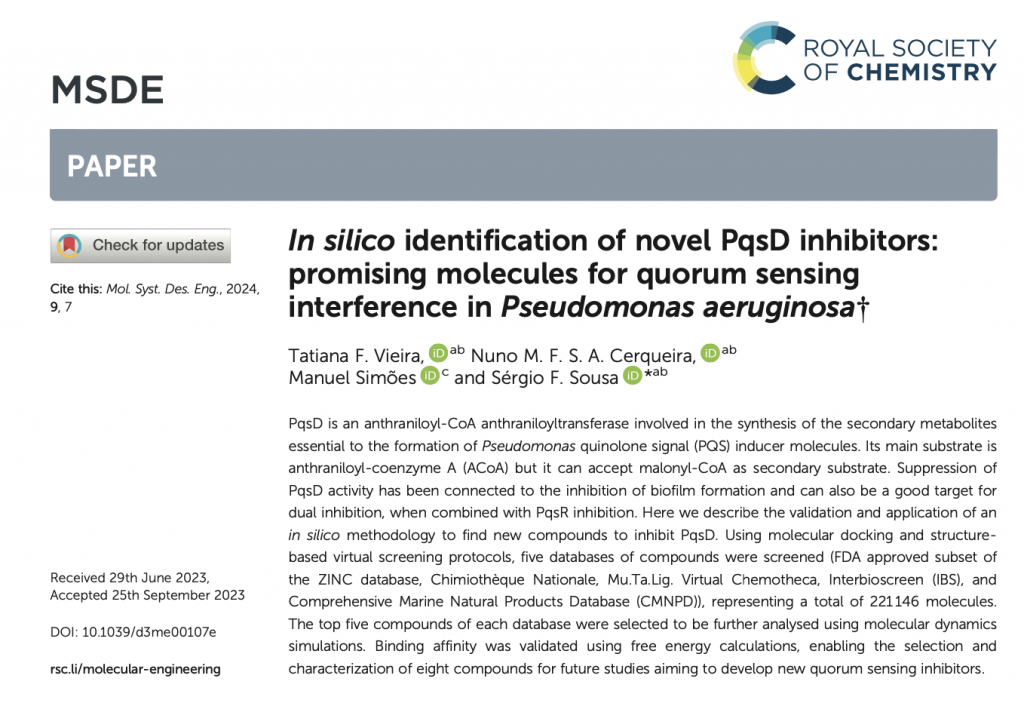Very happy to share our recent study on the application of an integrated multi-level computational approach to identify new promising molecules to selective inhibit quorum sensing in Pseudomonas aeruginosa by targeting PqsD, published in RSC’s journal Molecular Systems Design & Engineering (IF 4.60). Great work by Tatiana F. Vieira, as part of her PhD work, in collaboration with Prof. Manuel Simões (FEUP).
Targeting Pseudomonas aeruginosa MvfR in the battle against biofilm formation: a multi-level computational approach
Tatiana F. Vieira, Nuno M. F. S. A. Cerqueira, Manuel Simões and Sérgio F. Sousa
Molecular Systems Design & Engineering (2024) | DOI: 10.1039/d3me00107e
Abstract:
PqsD is an anthraniloyl-CoA anthraniloyltransferase involved in the synthesis of the secondary metabolites essential to the formation of Pseudomonas quinolone signal (PQS) inducer molecules. Its main substrate is anthraniloyl-coenzyme A (ACoA) but it can accept malonyl-CoA as secondary substrate. Suppression of PqsD activity has been connected to the inhibition of biofilm formation and can also be a good target for dual inhibition, when combined with PqsR inhibition. Here we describe the validation and application of an in silico methodology to find new compounds to inhibit PqsD. Using molecular docking and structure-based virtual screening protocols, five databases of compounds were screened (FDA approved subset of the ZINC database, Chimiothèque Nationale, Mu.Ta.Lig. Virtual Chemotheca, Interbioscreen (IBS), and Comprehensive Marine Natural Products Database (CMNPD)), representing a total of 221146 molecules. The top five compounds of each database were selected to be further analysed using molecular dynamics simulations. Binding affinity was validated using free energy calculations, enabling the selection and characterization of eight compounds for future studies aiming to develop new quorum sensing inhibitors.

.
